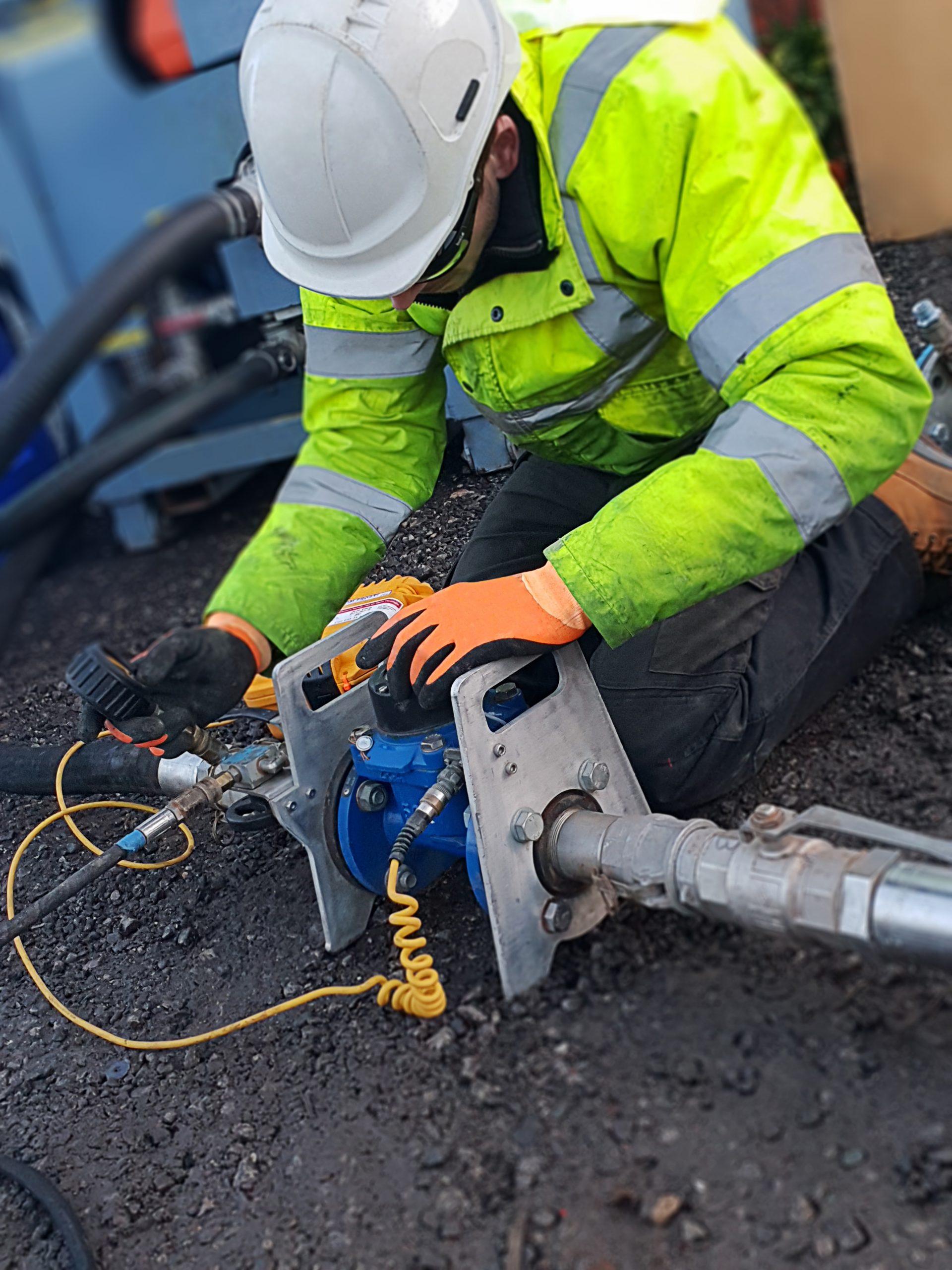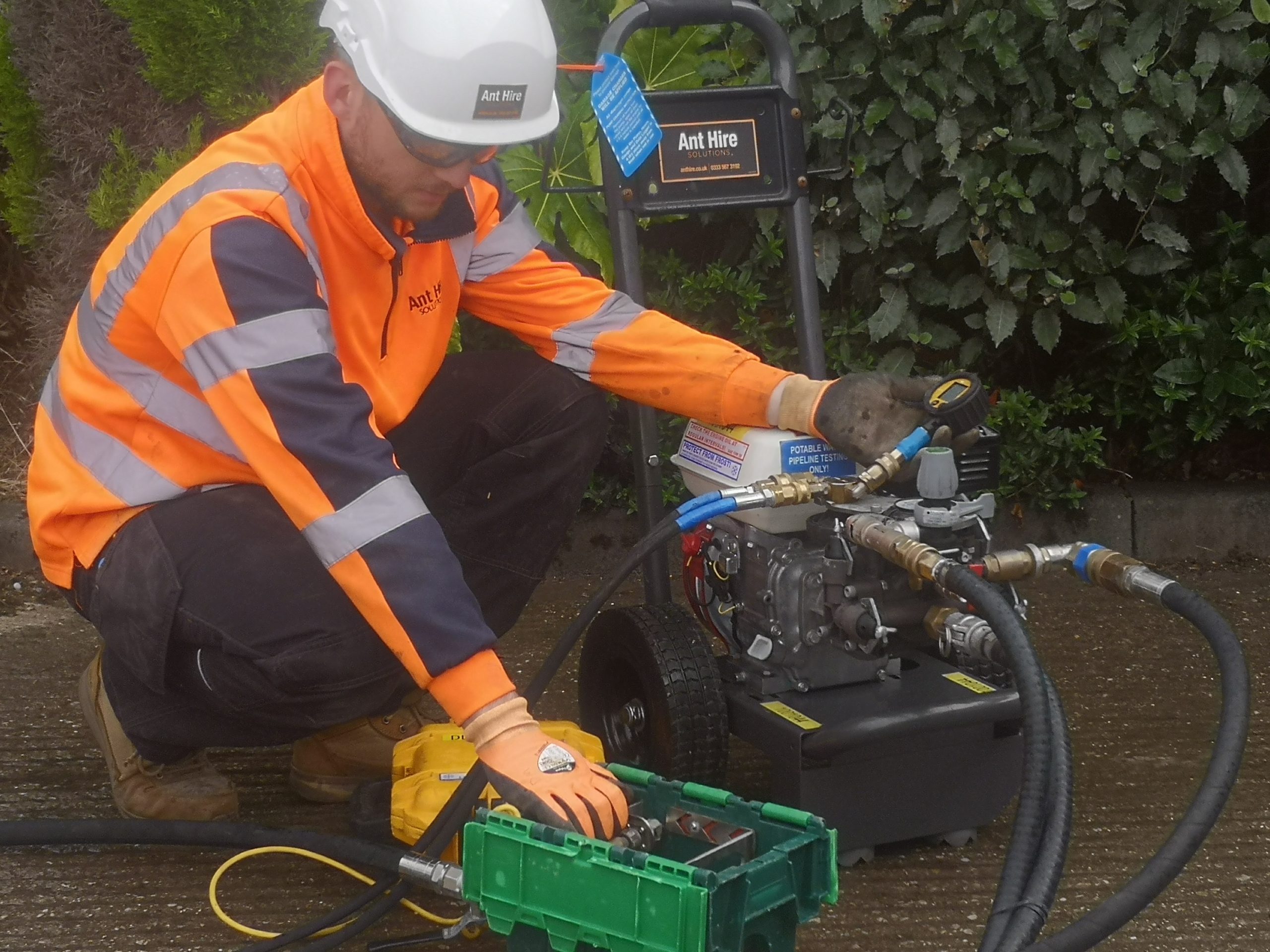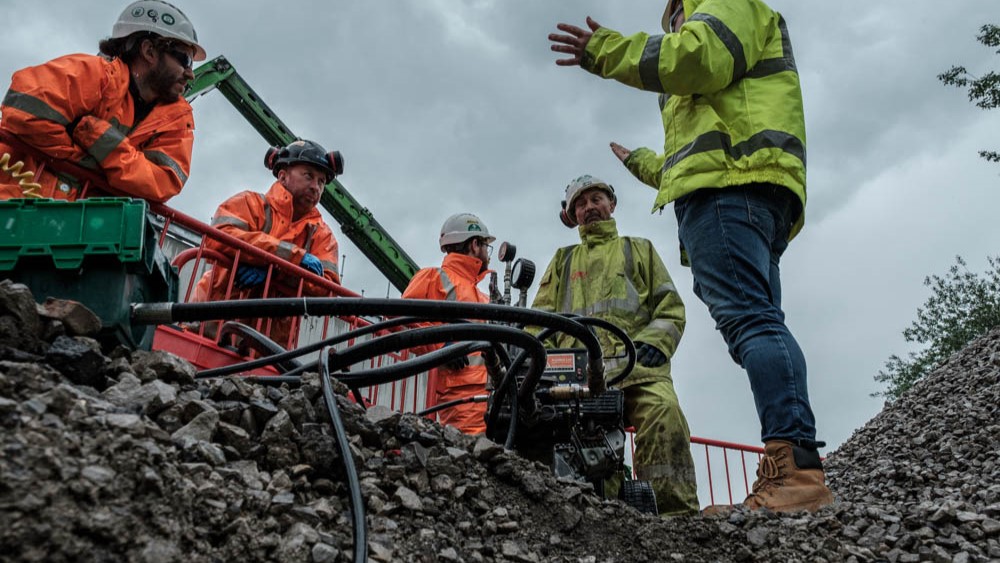The serious injuries to a young woman in Leicestershire, consequence of a hydrostatic pressure test going wrong, should be a wake-up call to the water industry, says Tony Kitchen, technical director, Ant Hire Solutions.

In August 2022, a 30-year-old woman was taken to hospital with serious leg injuries after an explosion damaged a road in the village of Cropston, north of Leicester. Two employees of a water industry contractor also sustained injuries.
While Health & Safety Executive enquiries and a full investigation are on-going, initial reports indicate that a pressure test was being undertaken on a pipeline when an uncontrolled burst occurred.
Hydrostatic pressure testing is a highly specialised process and is required to test joints and connections where new pipelines are installed. The test is carried out by applying pressures to the pipeline, using water as the test medium, to assess the quality of the installation and ensure a leak-free system.
It is imperative that water companies and their contractors are all working to best practice standards and guidelines to ensure air is totally or virtually eliminated from the pipeline during testing. By applying the relevant standards and guidelines rigorously, risk is mitigated and can be eliminated.
The potential energy contained in compressed air is substantially greater than water. Should a pipe fail with air entrapped, the impact is substantial due to the rapid release of this stored energy.
As seen at Cropston, such failure poses an extreme health and safety risk and can cause extensive and costly infrastructure damage above the surface.
The key standard and information and guidance note (IGN) for hydrostatic pipeline testing are:
- British Standard – EN 805:2000 Water supply – requirements for systems and components outside buildings
- Water UK – IGN 4-01-03 Issue 2 Guide to pressure testing of pressure pipes and fittings for use by public water suppliers
Avoiding a repeat of the tragic incident at Cropston will require a tightening up of practice across the sector, and water companies and main contractors need to review the capabilities of their pressure testing service providers. Some of the questions that should be asked include:
- Is pressure testing being undertaken in line with the prevailing standards?
- Prior to a test, are there tools available that can estimate ramp-up times compared with air content, to ensure a test can be abandoned before any safety breaches occur?
- Whose equipment is being used, and how is it maintained?
- What data is being collected and is the technology being used capable of measuring air content?
- Will pressure test data be analysed in real-time to ensure potentially dangerous or ineffectual tests are abandoned?
- Can data records and certificates be accessed at any time, and does the platform display all the critical data?

Digital technologies, like Ant-Hire’s Pipeline Installation Performance Evaluation tool – PIPE – are continually being enhanced, which allows for granular test data to be captured on multiple parameters accessible by the client. These include water leakage, trapped air, pressure and temperature.
Going further, the record of individual contractors, and even operatives, can also be analysed, identifying potential needs for targeted training and skills enhancement to ensure safety and improve the productivity of individuals and teams. Contractors following procedures correctly are more likely to get pressure testing right, building resilience in the network from the outset.
Analysis of Ant-Hire Solutions’ data for 2019-2021 identified that 54.4% of UK water company pressure tests passed first time, with 10% stopped for safety reasons. Water leakage was identified in 18.5% of cases.
Adherence to best practice and a commitment to improving performance can deliver multiple benefits for utilities and contractors. While the health and safety benefit cannot be overstated, the reputational risk of all companies involved is also at stake.
Further, if a pipe is prepared properly in readiness for a test, with all air extracted, hours can be shaved off a pressure test, compared with a test where air is present. Other benefits accrue for those companies operating at the highest standard, including extended pipeline lifespan, reduced water loss due to leakage, and the lower carbon footprint around those two indicators.
Greater resilience in the network can be achieved by engaging the pressure testing contractor at the earliest possible stage of the design process for new pipelines, helping avoid pitfalls and keeping project costs down.
In the wake of the Leicestershire incident, Ant-Hire is already seeing an uptick in downloads of its Experts Guide to Pressure Pipeline Testing. This 12-page document includes a planning checklist, equipment guide, air content management guide, assessment criteria for datalogger capability and risk management checklist.
This shows that there is already an appetite for getting the process right. Now water companies and contractors need to ensure their operatives and managers are resourced to do the job at the highest possible standard.
This can be achieved by giving them access to training to continually build skills, and by ensuring that the time is available to carry out best practice working. It also means identifying those service providers with a proven track record of operating to the highest possible standards.
Ant-Hire Solutions best practice guide can be accessed here



